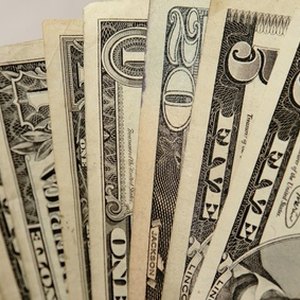
Postal money orders are one of the safest ways to send money. The U.S. Postal Service issues postal money orders and most businesses accept them as a legal form of currency. Money orders are similar to checks, with the main difference being that the money order is purchased in advance with cash and thus cannot be returned for insufficient funds.
Go to your nearest post office to purchase your money order. Most larger post offices sell money orders, although it is helpful to call ahead and make sure your location of choice has them available.
Show the clerk your identification, informing her how many money orders you need and how much the face value of each one will be. You will have to pay for your money orders with cash, so have enough cash on hand to cover the cost of each money order. You will also have to pay a small fee of between $1 and $2 for each money order, with larger money orders costing slightly more than small ones.
Fill in the recipient’s information in the appropriate space. Include the full name of the person or business who will be receiving the money order on the name line, filling in the recipient’s address on the line below the name. Make sure you print clearly so that there are no questions or concerns when the money order is cashed.
Write your name and contact information under the section labeled for the purchaser. Adding your name and address to this space will help the recipient identify who the money order came from and enable him to contact you if there are any questions.
Fold a blank piece of paper to fit inside your envelope, tucking the money order inside the paper before placing it in the envelope. Adding a blank piece of paper will disguise your money order and help prevent people from attempting to steal the money order and cash it.
Address the envelope with the recipient’s name and address in the lower right-hand corner of the front of the envelope and your return address in the upper left-hand corner.
Seal the envelope, placing a stamp in the upper right-hand corner before dropping it into the mail slot.
Tips
Make sure to add enough postage to cover your envelope. Large or heavy envelopes might require extra postage, so ask the postal clerk if you have included enough postage before mailing.
References
- United States Postal Service: Domestic Money Orders
- United States Postal Service. "Sending Money Orders." Accessed May 10, 2020.
- MoneyGram. "Send money your way." Accessed May 18, 2020.
- Western Union. "What Are Western Union Agent Locations?" Accessed May 17, 2020.
- U.S. Postal Service Office of Inspector General. "Modernizing the Postal Money Order," Page 5. Accessed May 17, 2020.
- Wells Fargo. "Wells Fargo Consumer and Business Account Fees." Accessed May 10, 2020.
- United States Postal Service. "Postal Facts." Accessed May 10, 2020.
- CVS. "CVS Health At a Glance." Accessed May 10, 2020.
- Walmart. "Money Orders." Accessed May 17, 2020.
- 7-Eleven. "Financial Services." Accessed May 17, 2020.
- Publix. "Customer Service FAQ." Accessed May 17, 2020.
- Kroger Money Services. "Money Orders." Accessed May 17, 2020.
- Kmart. "MoneyHub." Accessed May 17, 2020.
- Western Union. "Western Union and Meijer Ink Deal to Continue Longstanding Relationship." Accessed April 17, 2020.
Tips
- Make sure to add enough postage to cover your envelope. Large or heavy envelopes might require extra postage, so ask the postal clerk if you have included enough postage before mailing.
Writer Bio
Louise Lawson has been a published author and editor for more than 10 years. Lawson specializes in pet and food-related articles, utilizing her 15 years as a sous chef and as a dog breeder, handler and trainer to produce pieces for online and print publications.

